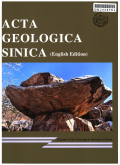- 钛学术文献服务平台 \
- 学术期刊 \
- 基础科学期刊 \
- 天文学、地球科学期刊 \
- 地质学报(英文版)期刊 \
Petrogenesis,Geodynamics and Radioactivity of the Granitic Rocks of the Nugrus Weakness Zone,South Eastern Desert,Egypt
Petrogenesis,Geodynamics and Radioactivity of the Granitic Rocks of the Nugrus Weakness Zone,South Eastern Desert,Egypt
基本信息来源于合作网站,原文需代理用户跳转至来源网站获取
摘要:
The studied granitic bodies belong to the south Eastern Desert of Egypt.They extend in a NNW-SSE trend along the same strike of the Nugrus weakness zone by which they are structurally controlled.These rocks are composed of biotite and biotite-muscovite monzogranites to syenogranites.Geochemically,a higher abundance of Ba and Rb in biotite granites with a relatively low abundance in biotite-muscovite granites as well as the diversity of Th,U,Nb,Ta,Zr,and REE reflects their origin from different sources and geodynamic settings.The biotite granites are predominantly metaluminous to low peraluminous whereas the biotite-muscovite granites have a peraluminous nature.Potassium enrichment at the expense of calcium in these rocks reflects a derivation from crustal sources by partial melting in the presence of a volatile system.Radiometric investigation showed high abundances of U(up to 38 ppm)and Th(up to 26 ppm)in biotite-muscovite granites relative to biotite granites(up to 5 ppm U and 18 ppm Th).Radioactive anomalies furthermore have been recorded in parts of biotite-muscovite granites that were affected by the faults(up to 116 ppm eU and 97 ppm eTh).Consequently,biotite-muscovite granites form a potentially fertile source for uranium mineralization.

推荐文章
Geochemistry, mineralogy, and radioactivity of the Abu Furad Area, Central Eastern Desert, Egypt
Hydrothermal alterations
Major oxide and trace elements
Radiometry
Mineralogy
Geochemistry
Altered syenogranites
Egypt
Identification of bacterial fossils in marine source rocks in South China
South China
Excellent marine source rocks
Bacterial fossil
Sedimentary environment
Petrology, geochemistry, radioactivity, and M–W type rare earth element tetrads of El Sela altered g
Geochemistry
REE-tetrad effect
Radioactive minerals
Radiometric measurements
Qash Amer
El Sela
Petrogenesis, geochemistry and geological significance of Paleocene Granite in South Gangdese, Tibet
Petrogenesis
Zircon U–Pb dating
Cuobulaguo granite
South margin of Gangdese
Tibet
内容分析
关键词云
关键词热度
相关文献总数
(/次)
(/年)
引文网络
引文网络
二级参考文献 (0)
共引文献 (0)
参考文献 (29)
节点文献
引证文献 (0)
同被引文献 (0)
二级引证文献 (0)
1976(2)
- 参考文献(2)
- 二级参考文献(0)
1980(1)
- 参考文献(1)
- 二级参考文献(0)
1981(2)
- 参考文献(2)
- 二级参考文献(0)
1983(2)
- 参考文献(2)
- 二级参考文献(0)
1984(1)
- 参考文献(1)
- 二级参考文献(0)
1985(1)
- 参考文献(1)
- 二级参考文献(0)
1989(1)
- 参考文献(1)
- 二级参考文献(0)
1990(1)
- 参考文献(1)
- 二级参考文献(0)
1991(1)
- 参考文献(1)
- 二级参考文献(0)
1992(1)
- 参考文献(1)
- 二级参考文献(0)
1993(1)
- 参考文献(1)
- 二级参考文献(0)
1994(4)
- 参考文献(4)
- 二级参考文献(0)
1995(1)
- 参考文献(1)
- 二级参考文献(0)
1996(1)
- 参考文献(1)
- 二级参考文献(0)
1997(1)
- 参考文献(1)
- 二级参考文献(0)
1998(1)
- 参考文献(1)
- 二级参考文献(0)
1999(1)
- 参考文献(1)
- 二级参考文献(0)
2000(1)
- 参考文献(1)
- 二级参考文献(0)
2003(1)
- 参考文献(1)
- 二级参考文献(0)
2004(1)
- 参考文献(1)
- 二级参考文献(0)
2006(2)
- 参考文献(2)
- 二级参考文献(0)
2008(1)
- 参考文献(1)
- 二级参考文献(0)
2021(0)
- 参考文献(0)
- 二级参考文献(0)
- 引证文献(0)
- 二级引证文献(0)
引文网络交叉学科
相关学者/机构
期刊影响力
地质学报(英文版)
主办单位:
中国地质学会
出版周期:
双月刊
ISSN:
1000-9515
CN:
11-2001/P
开本:
16开
出版地:
北京复外百万庄26号
邮发代号:
创刊时间:
1922
语种:
eng
出版文献量(篇)
3189
总下载数(次)
0
总被引数(次)
14369
期刊文献
相关文献
推荐文献
- 期刊分类
- 期刊(年)
- 期刊(期)
- 期刊推荐
力学
化学
地球物理学
地质学
基础科学综合
大学学报
天文学
天文学、地球科学
数学
气象学
海洋学
物理学
生物学
生物科学
自然地理学和测绘学
自然科学总论
自然科学理论与方法
资源科学
非线性科学与系统科学
地质学报(英文版)2022
地质学报(英文版)2021
地质学报(英文版)2020
地质学报(英文版)2019
地质学报(英文版)2018
地质学报(英文版)2017
地质学报(英文版)2016
地质学报(英文版)2015
地质学报(英文版)2014
地质学报(英文版)2013
地质学报(英文版)2012
地质学报(英文版)2011
地质学报(英文版)2010
地质学报(英文版)2009
地质学报(英文版)2008
地质学报(英文版)2007
地质学报(英文版)2006
地质学报(英文版)2005
地质学报(英文版)2004
地质学报(英文版)2003
地质学报(英文版)2002
地质学报(英文版)2001
地质学报(英文版)2000
地质学报(英文版)1999

 免费查重
免费查重










